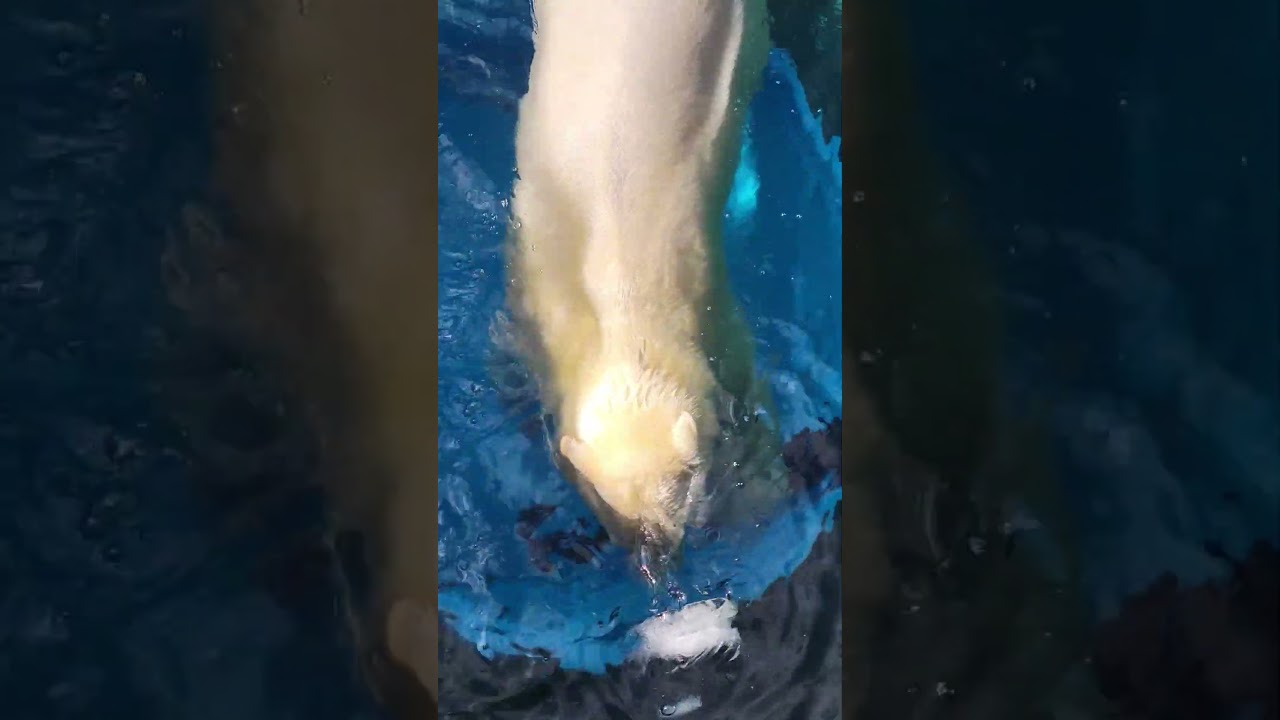– Playful polar bears enjoy fishsicles in their pool: a glimpse into zoo enrichment activities and their importance
– The role of diet in polar bear health and behavior in captivity
– Contributions of zoo management to wildlife conservation through educational programs
– Challenges and strategies in maintaining polar bear habitats in zoos
Polar bears are among the most iconic and easily recognizable species in animal kingdoms worldwide. Their stark white fur, imposing size, and charismatic behavior capture the imagination of people of all ages. One of the most engaging sights at many zoos is watching playful polar bears enjoy fishsicles in their pool. This activity provides entertainment for zoo visitors and serves as a critical component of the zoo’s enrichment programs designed to stimulate the bears’ natural behaviors and ensure their psychological well-being.
Zoo enrichment activities are essential for keeping animals physically active and mentally stimulated. These activities are carefully planned and executed by zoo professionals who deeply understand animal behavior and welfare. In the case of polar bears enjoying fishsicles, this enrichment mimics their natural hunting behaviors, encouraging them to dive and swim as much as they would while pursuing fish in wild arctic waters. Such activities help maintain their physical health and reduce stress, preventing boredom and stereotypical behaviors often seen in captive animals lacking sufficient stimulation.
Diet plays a pivotal role in polar bears’ overall health and behavior in captivity. In the wild, polar bears primarily feed on seals but consume fish, birds, and vegetation as available. Providing a varied diet that reflects their natural food sources as closely as possible is crucial for their physical health and significantly impacts their behavior. Introducing fishsicles, frozen treats made of fish and water, not only supplements their diet with necessary nutrients but also encourage behaviors such as foraging and problem-solving as they work to access the fish within the ice.
Zoo management and staff significantly contribute to wildlife conservation, extending beyond the day-to-day care of animals in their facilities. Educational programs highlighting polar bears’ behaviors and needs in captivity, such as enjoying fishsicles, play a critical role in raising public awareness about these majestic creatures and the challenges they face in the wild due to climate change and habitat loss. By fostering a connection between zoo visitors and polar bears, zoos inspire conservation action and support for efforts to preserve this species and their arctic habitat for future generations.
Maintaining suitable habitats for polar bears in zoos presents numerous challenges. These animals require large, complex environments that simulate the Arctic’s vast landscapes and cold temperatures. The design of polar bear enclosures must include substantial water bodies for swimming and diving and varied terrain with opportunities for exploratory and foraging behaviors. Striking a balance between creating a visually engaging exhibit for visitors and meeting the complex needs of polar bears is a constant challenge for zoo architects and management. Strategies to overcome these challenges often involve innovative design solutions that incorporate naturalistic elements and state-of-the-art cooling technologies to replicate the cold environments in which polar bears thrive.
In summary, watching playful polar bears enjoy fishsicles in their pool is more than just an entertaining spectacle for zoo visitors. It embodies the carefully orchestrated efforts of zoo professionals to provide enriching activities that stimulate natural behaviors, contributing to the animal’s overall well-being. Through educational programs, zoos leverage these engaging activities to underscore the importance of conservation, connecting people with wildlife and motivating them to support efforts to protect these magnificent animals and their natural habitats. The challenges faced in creating suitable environments for polar bears in zoos highlight the complexity of caring for such specialized species, underscoring the dedication and innovation required in modern zoo management and conservation efforts.
*****
Source Description
Twin polar bears, Laerke and Astra, enjoying fishsicles in their saltwater pool! 🐟 Meet the playful bears this weekend during spring break! Polar bear keeper chats are at 11:30am. 🐻❄️
🚧 After this weekend, the polar bears will be off and on exhibit temporarily as we enhance their habitat with a new, larger shade structure. Exactly when they are on will change daily depending on construction.
📹: Keeper Stephanie


